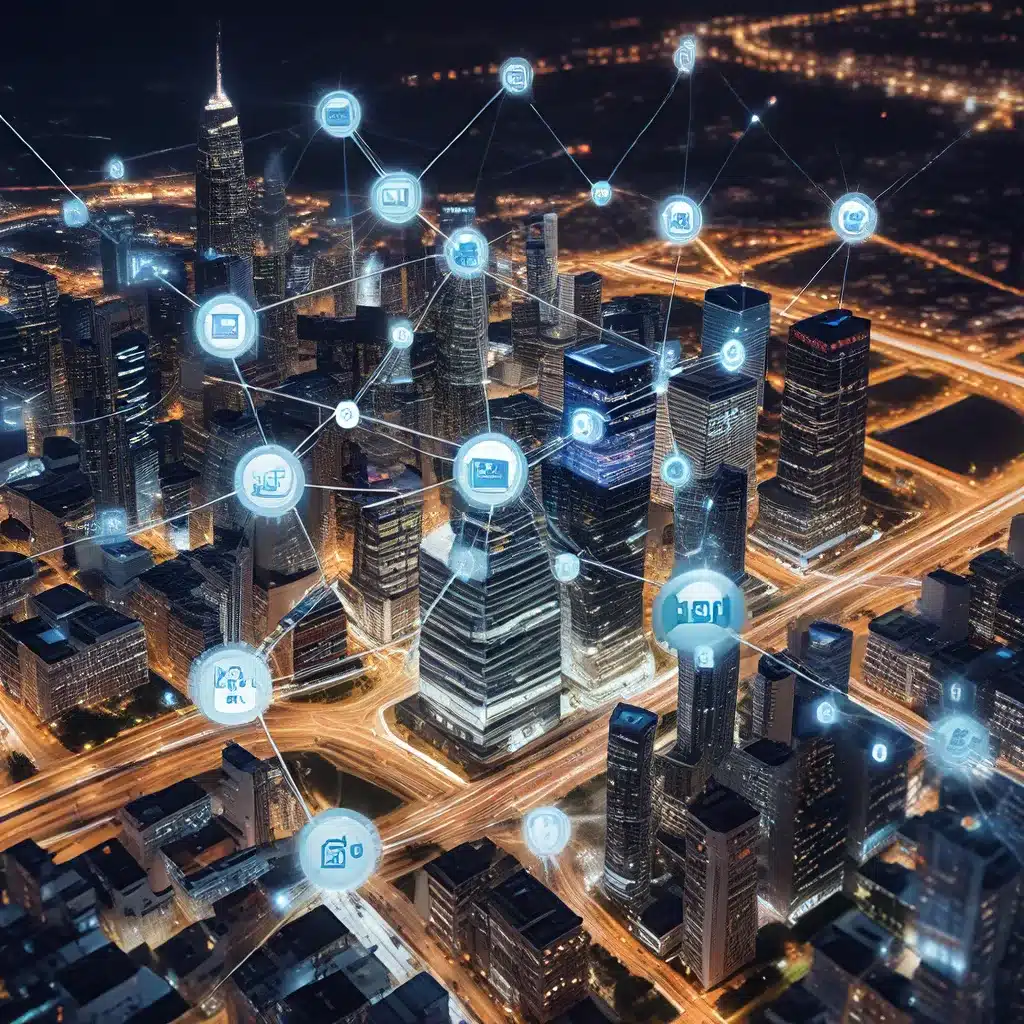
In the rapidly evolving landscape of the Internet of Things (IoT), sensor networks have emerged as a critical enabler, unlocking unprecedented opportunities for organizations across diverse industries. As the demand for real-time data collection, edge processing, and autonomous decision-making continues to grow, the integration of sensor networks with IoT technologies has become a game-changer, revolutionizing how we approach everything from industrial automation to smart cities.
Sensor Networks: The Backbone of IoT
At the heart of the IoT ecosystem lies a network of interconnected sensors, designed to gather and transmit data from the physical world to the digital realm. These sensor networks, equipped with advanced capabilities in areas such as data processing, wireless communication, and energy management, have become the backbone of IoT, empowering organizations to unlock deep insights and drive informed decision-making.
One of the key advantages of sensor networks in IoT is their ability to operate at the edge, or the outermost layer of the network. By processing and analyzing data locally, sensor networks can minimize latency, reduce bandwidth consumption, and enhance the overall responsiveness of IoT applications. This edge computing approach has proven particularly valuable in scenarios where immediate action or real-time decision-making is critical, such as in industrial automation, autonomous vehicles, or emergency response systems.
Sensor Network Design: Optimizing for IoT Applications
Designing effective sensor networks for IoT applications requires a holistic approach that considers factors such as network topology, communication protocols, and energy efficiency. Depending on the specific use case and operational requirements, sensor networks can be configured in a variety of topologies, including star, mesh, and hierarchical structures, each offering unique advantages in terms of scalability, reliability, and data routing.
Moreover, the choice of communication protocols, such as Wi-Fi, Bluetooth, ZigBee, or LoRaWAN, can have a significant impact on the performance and interoperability of sensor networks within the IoT ecosystem. These protocols, each with their own strengths and limitations, must be carefully evaluated to ensure seamless integration and efficient data transmission.
Energy Management in Sensor Networks: Powering the IoT Revolution
One of the critical challenges in sensor network design for IoT is the need for energy-efficient solutions. Many IoT devices, particularly those deployed in remote or inaccessible locations, rely on battery power or energy harvesting techniques to maintain continuous operation. Innovative approaches to power management, energy storage, and wireless charging have become essential for enhancing the longevity and sustainability of sensor networks in IoT applications.
IoT Security and Privacy: Safeguarding the Sensor Network Ecosystem
As the adoption of IoT and sensor networks continues to grow, the security and privacy of these interconnected systems have become paramount concerns. IoT devices, often with limited computational resources and outdated software, can present a significant vulnerability, with the potential for cyberattacks and data breaches that can disrupt entire IoT ecosystems.
To address these challenges, industry leaders and standards organizations have developed a range of security protocols, authentication mechanisms, and data encryption techniques specifically tailored for IoT and sensor networks. Implementing these safeguards, along with user education and regular firmware updates, is crucial for protecting the integrity and confidentiality of sensor network data.
Emerging Trends and Future Outlook
The future of IoT and sensor networks is poised for continued innovation and transformation. Advancements in areas such as 5G connectivity, edge computing, and machine learning are expected to further enhance the capabilities of sensor networks, enabling real-time data processing, predictive analytics, and autonomous decision-making.
Moreover, the integration of sensor networks with artificial intelligence (AI) and digital twinning technologies is paving the way for more intelligent and adaptive IoT systems, capable of optimizing operations, anticipating failures, and enhancing the overall user experience.
As the world embraces the IoT revolution, sensor networks will undoubtedly play an increasingly vital role in shaping the future of industries, cities, and our daily lives. By leveraging the power of sensor networks, organizations can unlock new levels of efficiency, agility, and innovation, positioning themselves at the forefront of the digital transformation.
To explore the full potential of sensor networks in IoT, be sure to visit https://sensor-networks.org/, where you can find a wealth of resources, case studies, and expert insights to guide your journey in this dynamic and evolving field.